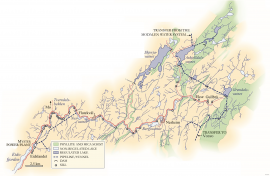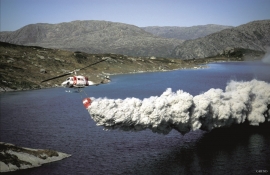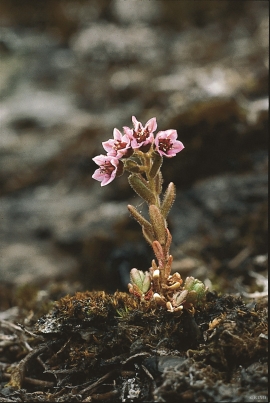Published: 10.08.2015 | Author: Endre Skaar, Stein Byrkjeland, Bjørn Moe
HYDROPOWER AND WATER RESEARCH
Water discharge at the outlet of the Ekso into Eidsfjord was halved after the big hydropower development in the mountainous area between Modalen and Eksingedalen and further southward toward Evanger in the 1960s, 70s and 80s. In an attempt to amend the changed environmental conditions in the waterway the developer built 35 small dams in the river.
The dams ensure that water will remain in the shallow pools in the river. There has been a lot of research done on the biological effects of this initiative in Eksingedalen. Especially the threshold pool at Ekse, 560 m a.s.l., was thoroughly monitored. Small trout were harvested at regular intervals to ensure that there would not be too many fish. The river pools thus became a kind of "aquaculture farm" for the stocks of trout the hydropower developers were required to set out, where the fishes' natural reproduction had been hindered by power production.
The water quality is good and the water less acidic in the upper parts of the waterway, since there is phyllite and mica schist among the minerals in the bedrock the water flows through. Further down in the water system the bedrock is harder and it has less capacity to buffer against acidification. Unfortunately for all living things in Ekso, much of the best water was routed away from the waterway in the 1970s. 38% of the natural catchment area was transferred to Vosso.
Later, in 1987, also the lower parts of the waterway were regulated. Myster power plant now takes water from e.g. Lake Nesevatnet. During periods when all the run-off from Lake Nesevatnet goes through a tunnel to the power plant, the water in the stretch of river between Nesevatnet and the outflow from the power plant is dominated by the small side rivers. The water quality in the side rivers is much worse than in Ekso above Nesevatnet; in some places the pH periodically gets as low as 5.0. Since 1997, therefore, the lower part of Ekso has been limed.
A number of other rivers and waterways in Vaksdal have been affected by acidification and these have also been treated with lime. In 2001 there were 21 inland waterways in the municipality that were limed. No other municipality in Hordaland has received so much funding for liming as Vaksdal in recent years.
Several different methods are used for liming the waterways in Hordaland, among them by helicopter, as shown here from Vaksdalfjella. (Sveinung Klyve)
Hairy stonecrop (Sedum villosum)
Hairy stonecrop got its name from the many small glandular hairs that cover the whole plant. The leaves are thick, juicy and sausage shaped, as in the other stonecrop species. This plant species grows on moist stone ledges and by springs, but it is small and not easy to spot. Besides, it is seldom seen in the mountains of western Norway. Hairy stonecrop grows several places in the phyllite area by Gullbrå, often together with yellow saxifrage, purple saxifrage and other specialized mountain plants. (Bjørn Moe)
- Bergenshalvøens Kommunale Kraftselskap. Fakta om Eksingedals- og Teiglandsvassdraget. Informasjonsbrosjyre.
- Rapport fra Eksingedalsseminar i 1989 og NVEs sluttrapport frå Etterundersøkelsesprogrammet.







